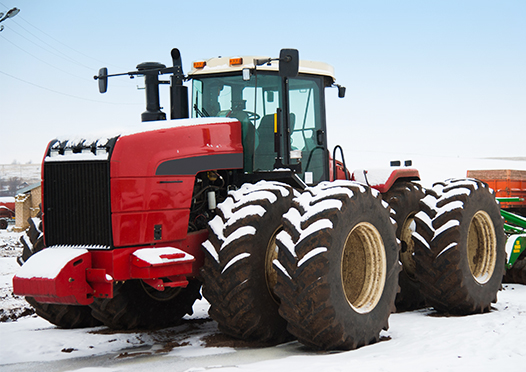Postharvest is a good time to check your fuel storage system to avoid common issues and keep equipment running smoothly through cold winter months.
Whether you are running biodiesel or standard diesel fuel, check storage tanks for water or other contaminants. Water is the most common source of fuel filter plugging issues in diesel engines during winter. When temperatures fall below 32 degrees, excess water in the tank can freeze and block the flow of fuel through the filter.
A Bacon Bomb device is an easy and inexpensive way to retrieve a fuel sample from the tank bottom, where free water and sediment settle. You can purchase your own Bacon Bomb for sampling or ask your fuel supplier to provide this service.
Place the fuel sample in a clear plastic or glass jar to inspect for water and sediment. The fuel should be clear and bright. Hazy fuel indicates water contamination. If you detect water, take steps to clean and remove it, or consider a deicer to keep the water suspended and moving through the system during cold weather.

Water in the tank also leads to microbial growth. Microbial contamination has become more common since the introduction of ultra-low sulfur diesel (ULSD) fuel in 2006. Prior to ULSD, high sulfur content in diesel fuel acted as a natural antimicrobial agent. If inspection shows water in your storage tank, work with your fuel supplier to test for microbes. Biocides are available to treat contaminated tanks, but in severe cases the tank should be drained and cleaned.
Take these steps to prevent water from entering your fuel tank:
- Top off tanks to eliminate air space that could foster condensation when temperatures change
- Keep fuel caps tight to keep water from entering the tank
- Inspect hoses and gaskets for leaks
- Keep underground storage tank sump pits and fill connection spill containers clean and dry
As winter months approach, make sure your fuel meets cold flow operability standards. Discuss your needs with your fuel supplier. Winter fuel additives may lower the cold filter plug point (CFPP), the temperature at which wax crystals start to clog fuel filters. Additives can improve flow of both diesel and biodiesel blends during freezing temperatures.
Another method of improving cold flow operability is by combining No. 1 diesel with No. 2 diesel fuel. Since No. 1 diesel is lighter than No. 2, be sure to put No. 1 in the tank first and No. 2 on top to achieve a better blend.
Cold weather performance issues are sometimes falsely blamed on biodiesel blends. In truth, all diesel fuels require maintenance steps in winter. Remember, biodiesel is an all-weather fuel with high performance year-round. With proper maintenance and basic housekeeping practices, you can expect a problem-free experience from either ULSD or biodiesel blends up to B20.
For more tips on cold-weather fuel operation, visit the National Biodiesel Board
website.
 Water in the tank also leads to microbial growth. Microbial contamination has become more common since the introduction of ultra-low sulfur diesel (ULSD) fuel in 2006. Prior to ULSD, high sulfur content in diesel fuel acted as a natural antimicrobial agent. If inspection shows water in your storage tank, work with your fuel supplier to test for microbes. Biocides are available to treat contaminated tanks, but in severe cases the tank should be drained and cleaned.
Water in the tank also leads to microbial growth. Microbial contamination has become more common since the introduction of ultra-low sulfur diesel (ULSD) fuel in 2006. Prior to ULSD, high sulfur content in diesel fuel acted as a natural antimicrobial agent. If inspection shows water in your storage tank, work with your fuel supplier to test for microbes. Biocides are available to treat contaminated tanks, but in severe cases the tank should be drained and cleaned.

 and then
and then